|
| Rune stone U 1173
Follow my work during 2014 |
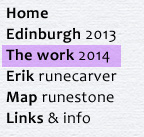
Many thanks for
the translation to:
Michèle Maurer
www.micmaug.com |
After my visit to Edinburgh in December 2013 and a
detailed study of the original stone, the time had
come to find suited material for the new rune stone.
|
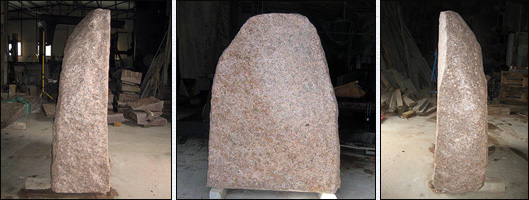 |
My first priority was the shape and the smooth
surface of the front as well as a certain thickness
on the right side where an additional cross was to
be added. I wasn’t planning on altering the
thickness of the material and the left side was to
be untouched.
The Vätö Stonemasonry was commissioned, and on the
13th of May, a well-shaped, fitting slab of 1.2 ton
of finest Vätö granite was delivered to the south of
the island of Adelsö. |
| |
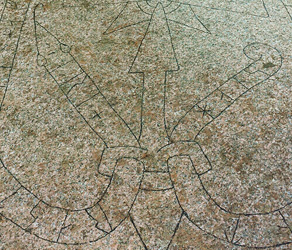 |
The sketching of Erik’s runes and ornamentation is
arduous work which must be allowed to take its time. |
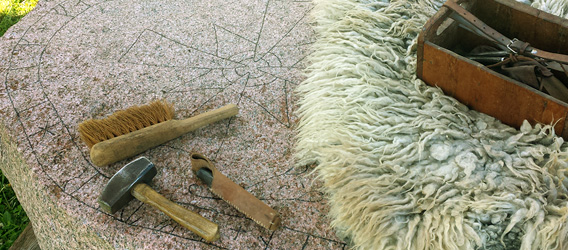 |
|
Some of the lost details of the original are being
reconstructed.
Once the sketching is completed, it’s time to fetch a brush,
a fleece and tools, and the carving can begin. |
| |
| I am
already familiar with this type of granite, but I choose
to start working on a neutral area, namely on the neck, a
few inches under the head of the dragon. |
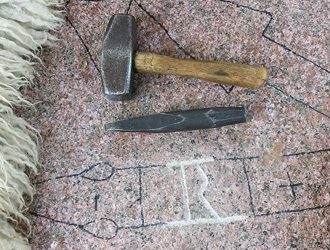 |
 |
I am putting off more difficult details like the tongue, the
eyes and the different angles of the cross until I am in
“carving mode” and acquainted with the stone.
It’s also crucial to mimic Erik’s work as closely as
possible, even his shortcuts and mistakes.
A certain warm-up period seems therefore necessary.
It feels good that the first rune was an
R… |
| |
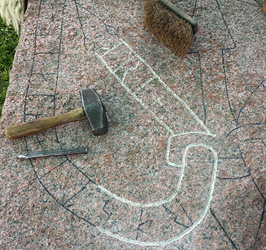 |
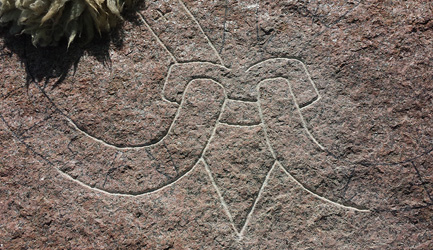 |
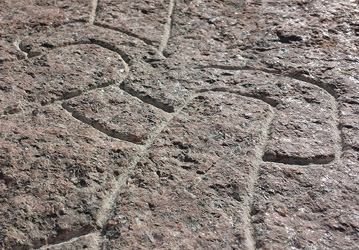 |
| I’m carving
the longitudinal lines of the body and have a go at some
more runes. |
I’m getting
more confident and carve the knot that
binds together the neck and the tail of the snake. |
Some
details |
|
|
 |
Now that I’m
acquainted with the stone, I carve the head. Small details
are important.
The differences in the shape of the eyes and their location
must match the original. |
|
|
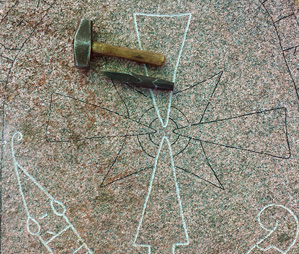 |
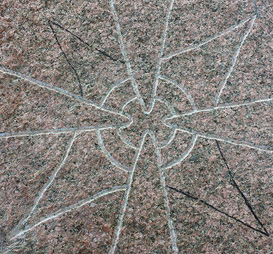 |
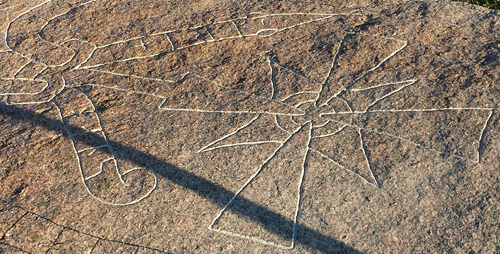 |
| The cross – I
start with the arms |
The blades of
the cross are not supposed to be identical. |
The knot, the
cross, the tail and the head have been carved.
|
| |
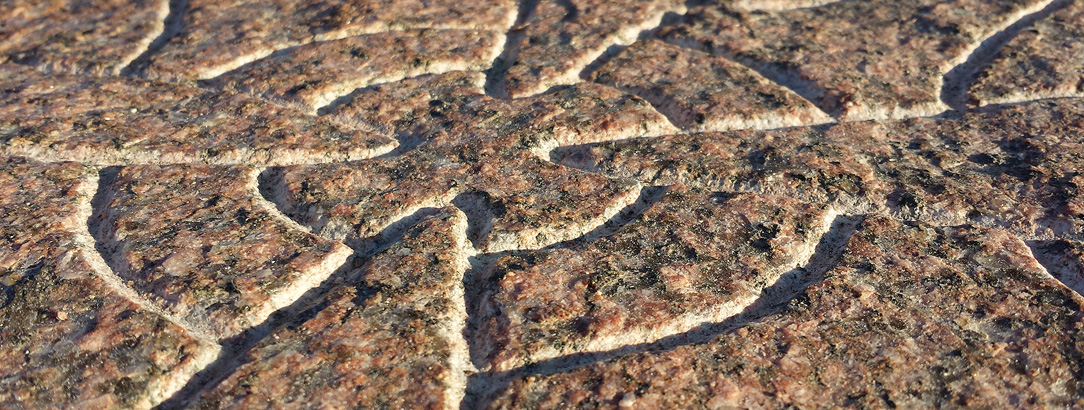 |
| Close-up of
the centre of the cross. I wonder if Erik was aware of the
fact there is a second cross forming in the centre. |
| |
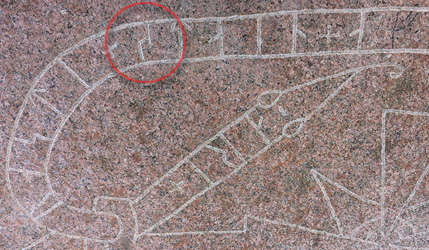 |
The ornamentation is
finished.
The next step is to carve the whole inscription using Erik’s
runes. The shape of runes is very personal, not unlike
someone’s handwriting in modern times.
The S-rune seems to have been problematic for Erik. He often
flipped it, and on three of his stones, all S-runes have
been substituted with half a main staff, short-twig rune.
U 774 / U 793 /
U 1154…
and sometimes, he made the main staff too long, as seen in
these pictures |
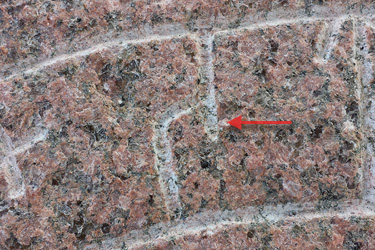 |
| |
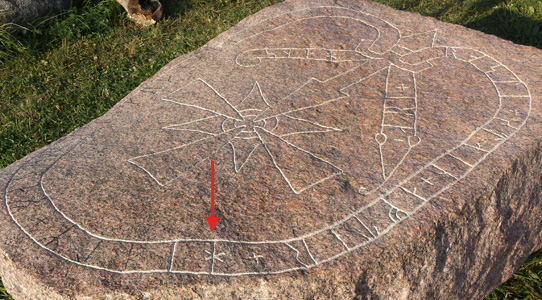 |
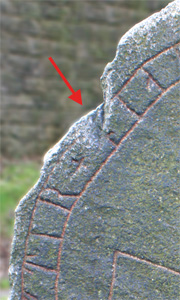 |
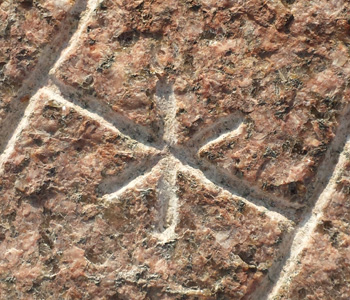 |
|
Ari-rasti-stain-eftir-Hialm-...
The H-rune in the name Hialm has been lost on
the original. A part of the main staff and one of the
branches is all that is left. |
The lost part
of the
original in Edinburgh. |
The H-rune is
the most difficult one to carve.
This is how it looks after I’ve finished it. |
|
|
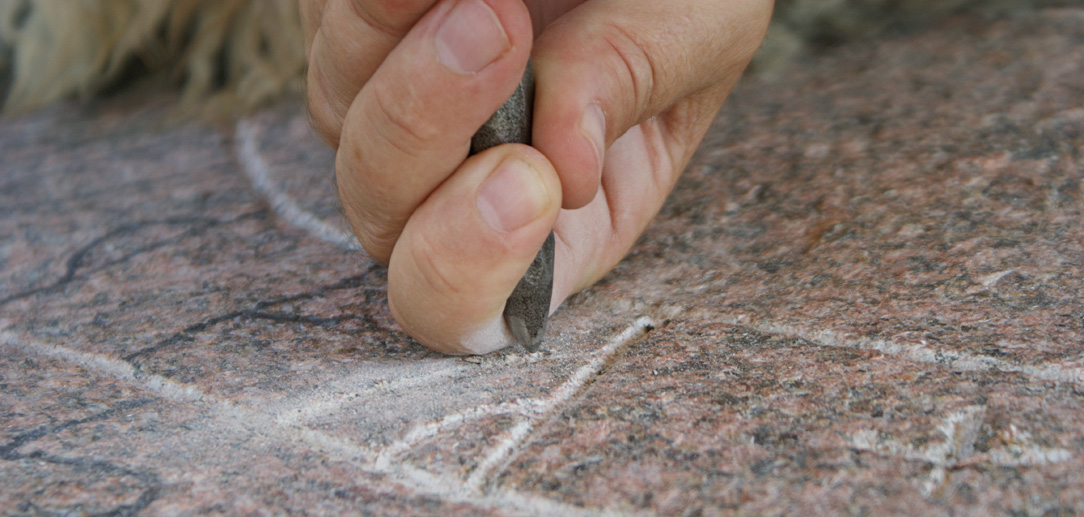 |
...eftir - Hialm - fathur -
sin...
The work continues. Here’s me, carving the last of
the branches of the rune F
in the word fathur (father). |
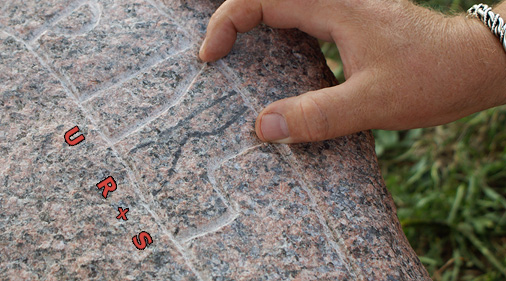 |
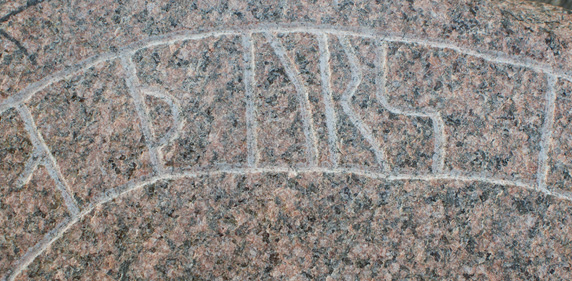 |
|
Erik made a major mistake: he
forgot the R-rune and
was forced to make drastic modifications. In order to mimic
Erik’s work, I do the same thing: I “forget” the
R-rune and carve the
S-rune in its place. Then I
go back and squeeze in a tiny R
between the U- and the
S-rune.
I think it is in this moment that I come closest to the
person of Erik, more than a thousand years after he carved
his stone. I’m sure that he, after having carved the
S-rune in the wrong spot,
tore his hair and beard and threw away both his chisel and
his hammer, yelling. I think he might have stopped working
for the day, fretting about how he could rectify his
mistake.
One can’t simply erase what has been carved into granite, so
Erik had only two alternatives: putting the
R-rune inside the body of
the dragon or squeezing it in between the
U and the
S. In the end, he chose the
second option, probably after a sleepless night. |
This and other details in his work show
that Erik only sketched the ornamentation but not the runes.
I think he might only have marked the position of the runes
and that he then carved them free-hand.
Since the R-rune isn’t
taking up any space now and the fact that there is no
x between the words “fathur
x sin” leads to a lot of free space, which means that
there is an unusually big gap between the following runes,
the I- and the
N-rune.
Distributing the runes evenly and to start and end in the
right place is harder than one might think. I have studied
Erik’s work and can see that he had the will to do so and
that he tried hard. But he seldom succeeded fully.
If he had taken the time to sketch his runes, he could have
avoided many mistakes.
|
| |
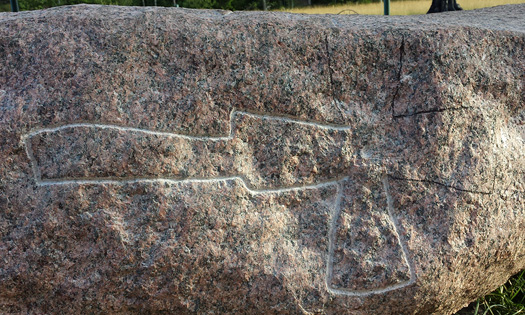 |
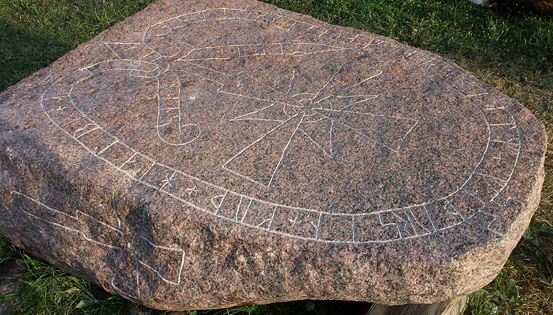 |
The rest of the runes have
been carved without any problems.
Now all that is left are the two additional crosses.
Here I’m carving the cross that is
situated on the edge. The other one is situated at the top
on the front of the stone. Both crosses were as badly
planned as they were carved, which makes me think that it
can hardly have been Erik who’s to blame for them.
I think the crosses were added later,
without Erik’s consent.
The question is: Why? |
The carving on Erik’s new rune stone is
done! Now it has to be painted and raised. |
|
|
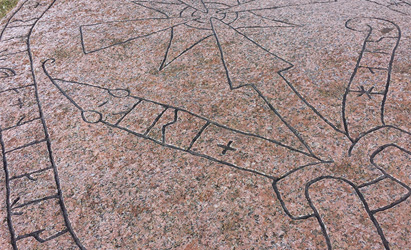 |
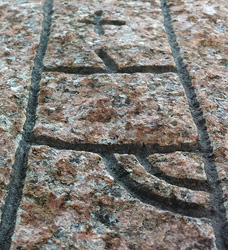 |
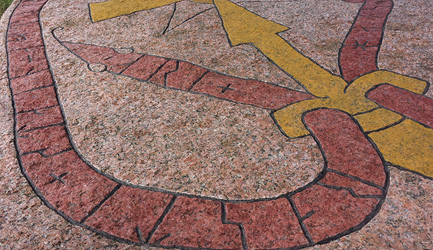 |
| Black paint
in the carving lines adds depth and contrast. |
Filling in
the carving lines is
time-consuming since there
are so many tiny details. |
I try to make
the other colours transparent
so they blend with the stone. |
| |
| |
Painting old
runestones?Which colours?
Original colors? |
I think we’re
having the wrong ideas about
painting old runestones.
Of course, the carving lines of all stones were originally
filled in, sometimes even the ornamentation. Maybe the
entire front of the stone was painted. The paint that was
used would last for about 5-15 years.
No matter how much was filled in or which colours were used
when a specific rune stone was painted for the first time, it
was certainly repainted many times. Maybe the same colours
were used or maybe new ones, depending on fancy,
possibilities and finances.
The rune master was aware that the colours and colouration
were bound to be changed at some point. He could only hope
that every repainting would set off his artwork in the best
possible way.
The fact that runes were carved and not simply painted shows
that they were meant to last for a long time, much longer
than the runemaster could hope to be around in order to
influence the choice of colours.
I believe that every new generation was meant to paint the
old runestones after their own ideas, their fancy and taste.
Not painting the stones at all or only filling in the
carving lines often diminishes the rune master’s work and
prevents the viewer from getting the right experience when
they come upon an old rune stone.
This is how I reason when carving my own stones, and I
believe we rune masters think alike, even if there are a
thousand years between us.
I hope I did the right thing
and that Erik is pleased
with my version of his piece of art in Morgongåva. |
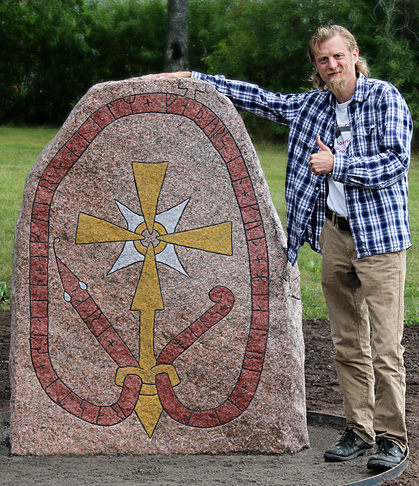
Mats Köbin in front of the
new
rune stone in Morgongåva. |
|


